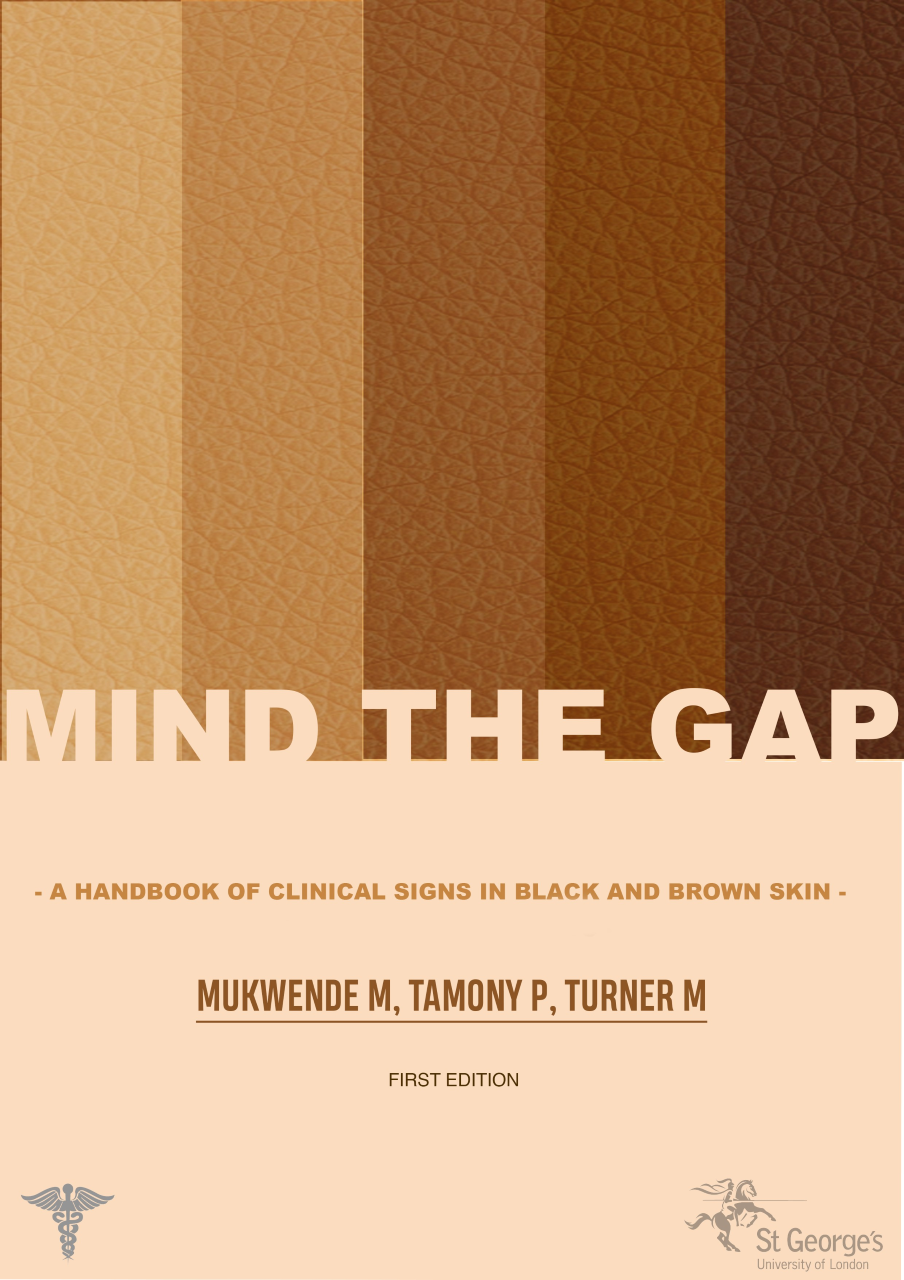 Back to Case Studies
Back to Case Studies
Location
London, UK

Mind the Gap is a free clinical handbook that describes signs and symptoms of skin disease as they present in people with black and brown skin. The handbook aims to address a long-standing problem: the majority of medical texts worldwide underreport how symptoms manifest on darker skin. This bias increases the risk of errors and misdiagnoses, leading to poorer health outcomes for people of color.
The first iteration of Mind the Gap was published online in August 2020 and included details on 24 skin conditions. Unlike a traditionally printed handbook, Mind the Gap is a dynamic web-based living document that can be constantly updated with additional images and data. The website allows users worldwide to submit labeled images of diseases on black and brown skin, effectively crowdsourcing a growing database used by various stakeholders to address gaps in medical imagery.
The lack of diversity in the medical field is a well-known issue that has had pernicious effects on health outcomes, medical education, and the experiences of healthcare professionals. Most medical textbooks that teach about diagnosing skin disorders do not include images of skin conditions as they appear on people of color. Because many key characteristics of skin disorders appear differently on different complexions, this lack of representation can lead to underreporting, misdiagnosis, and unnecessary suffering.
For example, African Americans have the lowest survival rate for melanoma out of any racial group in the U.S., with a five-year survival rate of 66% compared to 90% for white patients.1 The relative lack of information regarding, and experience diagnosing melanoma in dark skin reduces the likelihood of accurate and early diagnoses that might improve a patient’s survival rate.
The recent COVID-19 pandemic has further illustrated the extent of racial health disparities, with some studies finding people of color to be four times more likely to be negatively affected by COVID-19 than white people. Common approaches to identifying COVID-19 patients have included looking for blue discoloration in lips and skin tone, as well as blistered digits known as “COVID toes.” These symptoms present differently in people with dark skin, but these details have not been well-captured. For example, when dermatologists started an international registry to catalog skin manifestations of COVID-19, they compiled conditions in more than 700 patients, of which only 34 were Hispanic and 13 were Black.2 These factors contribute to the fact that COVID-19 has been less accurately diagnosed and thus more likely to spread among communities of color.3
 The majority of medical texts worldwide have been significantly biased toward lighter skin leading to poorer health outcomes for people of color.
The majority of medical texts worldwide have been significantly biased toward lighter skin leading to poorer health outcomes for people of color.
Mind the Gap originated as a staff-student partnership project at St. George’s University of London. Between December 2019 - May 2020, the team developed the first iteration of the Mind the Gap handbook, with the intent for it to serve as a tool for addressing the absence of details, imagery, and terminology around skin conditions in darker skin. They started by trying to compile images and information on conditions known to have different symptoms in lighter vs darker skin. For example, they compiled information on Kawasaki disease, which presents with a red rash on white skin, but is less conspicuous on dark skin tones. However, they encountered substantial difficulty in finding and collecting appropriate images—a challenge shared by many others in the field. To address this, they created a website to publicly crowdsource labeled images, so that clinicians, medical students, and patients could actively contribute their own images and descriptions. In June 2020, they published the first edition of Mind the Gap, which included information on 24 skin conditions.
Since its release, Mind the Gap has received exuberant global attention and featured across numerous international platforms. As of March 2021, the handbook had been downloaded over 150,000 times by people in at least 106 countries. It has also been added to the curricula and recommended reading lists of at least 20 universities and hospitals. The work has been featured in the House of Lords, Sky News, the Washington Post, the BMJ, NBC News, Medscape, Al Jazeera, Bloomberg News, CBC, Fox 5, and ITV News.
The team is in conversation with a wide variety of potential partner organizations, including research institutions, governments, and technology companies. They are continuing to collect crowdsourced images through their website, and plan to release a second edition of the Mind the Gap handbook in both print and digital formats later in 2021.
¹ Carolyn McMillan and U. C. Newsroom, “The Skin Care Myth That Harms People of Color,” University of California, July 17, 2019, https://www.universityofcalifornia.edu/news/skin-color-clinics-aim-end-health-care-disparities-dermatology. ↩
² Roni Caryn Rabin, “Dermatology Has a Problem With Skin Color,” The New York Times, August 30, 2020, sec. Health, https://www.nytimes.com/2020/08/30/health/skin-diseases-black-hispanic.html. ↩
³ Jill C. Muhrer, “Risk of Misdiagnosis and Delayed Diagnosis with COVID-19,” The Nurse Practitioner 46, no. 2 (February 2021): 44–49, https://doi.org/10.1097/01.NPR.0000731572.91985.98. ↩